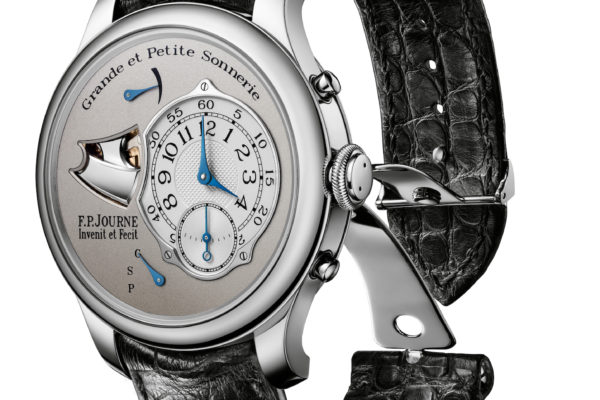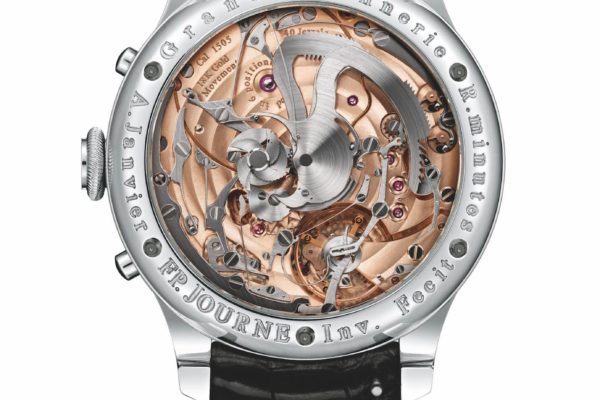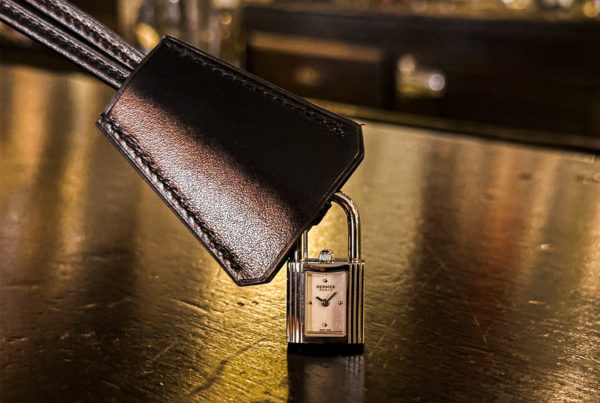Episode 3: The secrets of the Sonnerie Souveraine
In a long interview, the master watchmaker confided in us about the origins of four of his brand’s founding timepieces: the Tourbillon Souverain (1999-2003), the Chronomètre à Résonance (2000-2004), the Sonnerie Souveraine (2006-2019) and the Astronomic Souveraine (2020). In a series of four chapters, he explains the genesis of these four models, their raison d’être, but he also reveals his creative process, the work in progress and his ultimate quest. Isabelle Cerboneschi

It took François-Paul Journe six years to create his Sonnerie Souveraine and a lot of rage to complete this watch that gives a sound to the passing of time. He stopped producing it in 2019, but he has not closed the file…
The master watchmaker showed me the first version of his grand sonnerie in 2005. “But I was not happy with it. I took it apart and redid it. It took me a year to stabilise it”, he confided a year later when presenting the final model. This piece, which he was reluctant to allow to be photographed, and not only because of its price of 650,000 francs at the time, was the culmination of a long quest: six years of research and ten patents registered!
The result was of incredible elegance and finesse – 42 mm x 12.25 mm – while it carried one of the most difficult complications to achieve: a grand strike that must give 812 hammer blows during 24 hours, while a minute repeater gives 32 at most, by arming their respective springs. This is where the difficulty lies: in the phenomenal energy that must be found to achieve this. But the most astonishing thing about this piece, which could also be put into minute repeater mode, was the ease with which it could be handled. “The specifications were simple: “for an 8 year old”, he confided. It is at the moment of winding and setting the time that things get complicated with grand strikes, at this precise moment that one risks a false operation, that there is breakage and that the watch ends up in the after-sales service.
INTERVIEW
How did you solve the problem of the risk of breakage when winding?
François-Paul Journe : Instead of two springs and two barrels, as on the traditional grand strikes, which allow you to adjust the energy of the movement or of the striking-work as you wish, I only put one spring for the two functions and it can only be wound up in one direction. By a system of securities, at the time of the setting of the time, the striking is blocked and when the striking is engaged, there is no possible resetting. As for the power reserve, it takes into account the overall energy loss, thanks to a differential calculation. There is 24 hours of power reserve in grand strike mode and 5 days for the hour indication if the strike is not used. And when there are only three revolutions of the barrels left – about 24 to 30 hours – the striking mechanism is blocked to leave 24 hours of power reserve for the movement so that the hours continue to run.
When you first presented the Sonnerie Souveraine to me in 2006, you said, “This piece is a great lesson in humility.” What did you mean by that?
Sometimes you have to keep your anger to yourself when things go wrong. There are great moments of loneliness. The most difficult part was the 2% that remained to be perfected. You have to work subtly to get a watch to strike 812 hammers a day! There is no other great grand strike that meets all our criteria.
Why did you stop it? To do the Astronomic?
Oui. Je n’avais pas assez de mains. Mais je n’ai pas lâché l’affaire : j’en ferai une autre !

So we’ll wait, knowing that it took you six years to create the first one…
Six years, but not forgetting the experience I accumulated when I developed a grand strike for Piaget in 1996. Piaget had made a book in 1993 and on one page there was a photo of a minute repeater under which it was written “Grande Sonnerie” (Montres et Merveilles de Piaget, ed. La Bibliothèque des Arts, page 58, editor’s note). The brand’s marketing department therefore decided to make a genuine grand strike. They put out a call for tenders, I won the contract and created 10 pieces. It was a watch with two barrels. The hammers were already positioned on the dial side and this model was the precursor of mine. In the 2000s, clients asked me to create a grand strike. I started to design one by eliminating all the mistakes I had made on the previous one, while improving it. The one I made for Piaget was supposed to wind both ways, but the customers didn’t know how to use it and broke everything. I decided to launch mine only if it was unbreakable. Mine has only one spring for both functions – the grand strike and the hour display – and you wind it like a normal watch.
It has been patented no less than ten times!
Yes, including a patent for not being able to wind it while it is striking and vice versa.
It strikes quarters, halves and the hour. It gives 812 strokes of the hammer for twenty-four hours. How did you manage to save all the energy needed in the heart of a wristwatch, which, because of its small size, has a limited energy reserve?
It doesn’t need a lot of energy: it needs enough energy. The secret is a whole composition: it’s the gear paths, the size of the racks, the bigger they are the more precision you have… It’s not the striking force that counts, but its inertia.
How has this watch improved the science of time measurement?
It has not improved anything: it has improved me! (And he bursts out laughing).

















